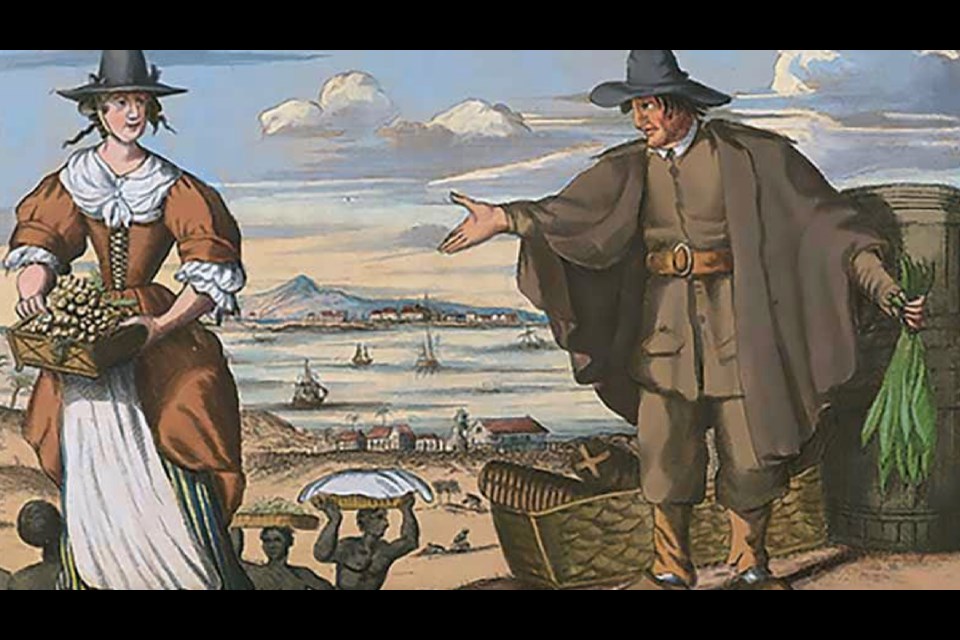This column is Part 2 of my two-part series on slavery and the Quaker movement. You can read Part 1 here.
An ever-increasing number of free Black Christians prompted the slaveholders to create the concept of white supremacy. We begin to see lawmakers write new laws, redefining citizenship to include the word “white” and “Christian.” This was to be how the word “white” came into use in legal records.
The codification of ‘whiteness’ as a legal category was specifically intended to exclude free Black Christians from the full rights of citizenship. We assume race is a biological reality when it is a political category.
With the creation of whiteness, slave conversion became less threatening. Whiteness, rather than religious difference, became the new way to justify and enforce slavery. (Christian Slavery: Conversion and Race in the Protestant Atlantic World, by Katharine Gerbner)
For those of us who identify with the Quaker tradition, as I do, this history calls us to think about what it really means to combat oppression. This also calls us to confront the uncomfortable aspects of Quaker history. When we relegate the blame for slavery and oppression to people “in the Southern United States,” for example, we are actively erasing Quaker complicity in, and support for, slavery not only in Barbados but also elsewhere to the north. It’s an uncomfortable past, but a past that needs to be brought into the light.
Looking carefully at our Quaker past can teach us a lesson about social justice. It’s not enough to have good intentions; we must be critically engaged with our past to understand the influence it continues to exert today. The story of the Black experience is reflected in the Indigenous past and that of the early Asian experience.
Quakers, as well as many evangelical Christians, both Black and white, played a central role in the abolitionist movement. We can and should remember those abolitionist Quakers and learn from them. What we cannot do is whitewash our own history, or we risk repeating it.
Quakers of the 18th and 19th centuries were obviously aware fellow Quakers had once held slaves. It was not enough to clear the Society of Friends of the sin of slaveholding but to look toward educating the freed people.
Quakers had a problem. They had determined slavery was abhorrent but lived in a society and under a government that upheld that people could be property. For Quakers, when religious duty came into conflict with the law of the land, it was the duty of the Christian to suffer rather than obey.
Quakers had a history of resisting what they considered unjust, going to jail for their beliefs. This was certainly true in our own area under the Family Compact. Thousands of Quakers spent time in prison, in some cases for years. Non-violent civil disobedience has been a part of Quaker practice since the 1650s.
The story of the Quakers in the Underground Railroad is part of its mythology, with many people believing any house once owned by a Quaker must have been a stop on the Underground Railroad. We know that in our area, when the slave catchers came in pursuit, local Quakers placed any number of peaceful obstacles in their way. The reputation of Quakers for anti-slavery was well known among the enslaved.
We know today that fugitives from slavery were not necessarily headed to Canada; they were headed to places of safety. There is ample evidence of a Quaker and African-American Underground Railroad network that assisted freedom seekers on their way north and Canada was part of this promised land.
I suspect ‘the travellers’ felt safe because they were living among free people of their own colour and among Quakers who now supported their cause.
Not all Quakers, and probably a minority of Quakers, participated in the organized anti-slavery movement. Like many stories from our past, the story of the Quakers and slavery is far more complicated than first meets the eye. There are nuances we need to clearly identify when we retell our history.
I hope this column will prompt you to re-examine our history and rediscover the rich mosaic of our local history.
Sources: The Blacks in Canada: A History by Robin Winks; The African Canadian Legal Odyssey: Historical Essays ed. Barrington Walker; Unyielding Spirits: Black Women and Slavery in Early Canada and Jamaica by Maureen G. Elgersman; Enslaved Africans in Upper Canada Online Exhibit - An online exhibit by the Archives of Ontario; From Slavery to Settlement - Historical accounts and key documents relating to the abolition of enslavement and the Establishment of Black Settlements in Ontario - Archives of Ontario; The Act to Limit Slavery in Upper Canada - Archives of Ontario; Slavery in the Quaker World by Katharine Gerbner; Clarifying The Issue of Quakerism and Slavery – Paper submitted by Richard MacLeod (1975); The Quakers of Canada – A History by Arthur G. Dorlandl A Quaker Call to Abolition and Creation by Lucy Duncan; Quakers and the Underground Railroad: Myths and Realities by Christopher Densmore and Larry Gara; The Liberty Line: The Legend of the Underground Railroad; Black Enslavement in Canada an Article by Natasha Henry-Dixon; Underground Railroad – Canadian Encyclopedia; Fugitive Slave Act of 1850 – Canadian Encyclopedia; Slavery Abolition Act, 1833 – Canadian Encyclopedia; Slavery of Indigenous People in Canada – Canadian Encyclopedia; An Act to Prevent the Further Introduction of Slaves and to Limit the Term of Contracts for Servitude, 9 July 1793
Newmarket resident Richard MacLeod, the History Hound, has been a local historian for more than 40 years. He writes a weekly feature about our town’s history in partnership with NewmarketToday, conducts heritage lectures and walking tours of local interest, and leads local oral history interviews.
